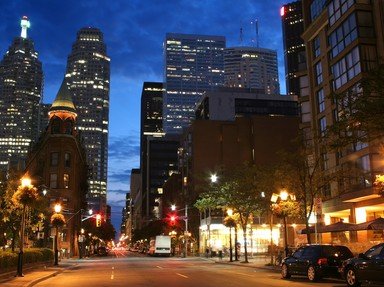Quiz Answer Key and Fun Facts
1. Let's start with a little Canadian-style irony. Which municipality on Nova Scotia's Eastern Shore has a brewing company and several varieties of beer named after it?
2. Try this one on for size. What's the name of a municipality on Prince Edward Island?
3. Captain James Cook mapped and named much of coastal Newfoundland, evidently with a sense of humor and a penchant for tweaking the overly sensitive or easily offended. Three of these place are real towns on the island of Newfoundland. Which one is in Alaska, NOT Canada?
4. You pull on your jeans, brush up on your French, and head to what city across the St. Lawrence River from Quebec City?
5. Saints be praised! We can stay in Quebec for dessert. To which charming little city, only about 50 kilometers east of Montreal, will you go to get it?
6. Are you hydrophobic, or can you identify the ghost town in the Niagara region of Ontario, named after a geological feature?
7. There's gold in this here joint. A mining town in Manitoba earned international interest in 2002, when the Canadian government awarded the Prairie Plant Systems Company a contract to produce medical marijuana just outside of town in an abandoned mine. What town is this?
8. Speaking of hockey, resolute tough guy Clark Gillies played in the NHL for the New York Islanders from 1974-1986. Where in Saskatchewan was he was born? (If you're not a fan, just open your mouth and ask Teddy Roosevelt's second party)
9. Like Gordon Lightfoot, we're Alberta Bound, heading to western Canada. Can you pick out the city which owes its name to a Blackfoot Indian word for the eagle tail feather headdress worn by a specific special tribal member?
10. Is spying something the same as espying it? Wait, that's not the real question. That's your last hint. Which one is the real geological feature in British Columbia?
Source: Author
Nealzineatser
This quiz was reviewed by FunTrivia editor
agony before going online.
Any errors found in FunTrivia content are routinely corrected through our feedback system.
